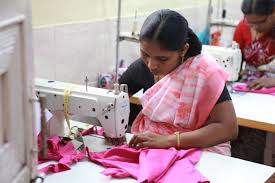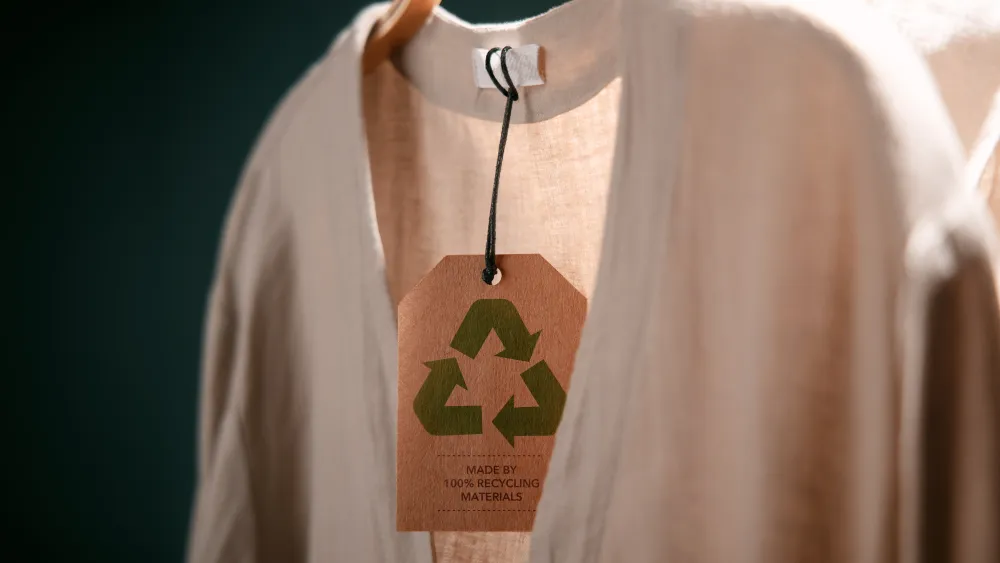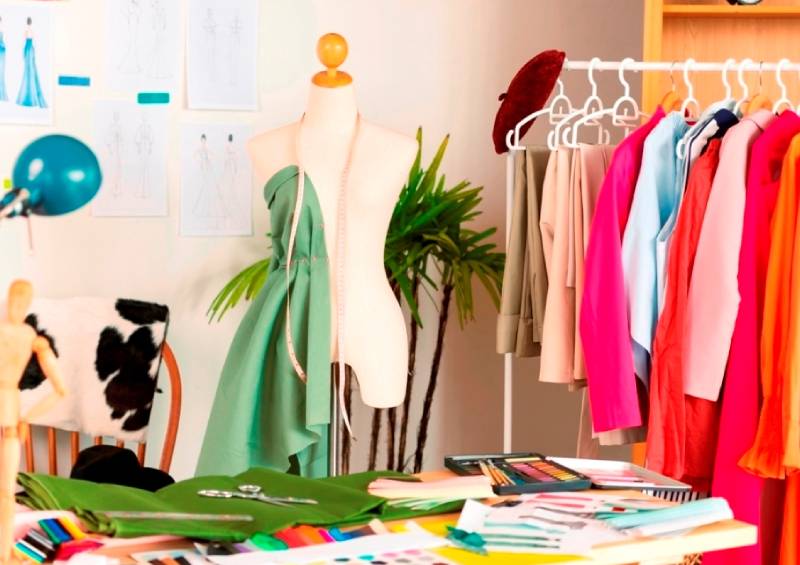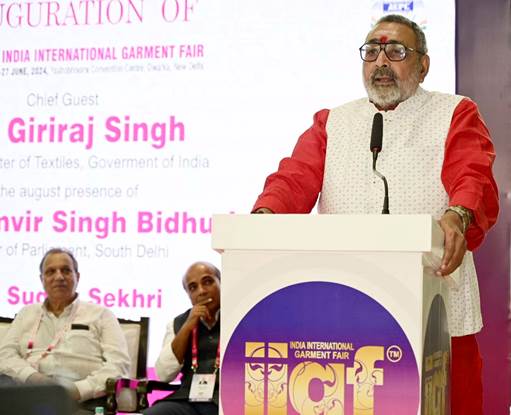FW
Pakistan has almost achieved the revised estimated cotton production target of 12.33 million bales set for the current season 2013-14. This would positively affect the country's exports, especially to EU countries, under the GSP Plus.
The government has fixed cotton production target for the season 2014-15 at 15.10 million bales from an area of 3.128 million hectares out of which Punjab will produce 10.5 million cotton bales from 2.428 million hectares. Sindh will produce 4.200 million cotton bales from 0.650 million hectares, Baluchistan will grow cotton on 0.050 million hectares and produce 0.400 million cotton bales, and Khyber Pakhtunkhwa will cover 0.00035 million hectares and produce 0.0015 million cotton bales.
During 2013-14, cotton was planted on an area of 5.40 million acres against the target of 6 million acres, a 9 per cent decrease from the set target and a 5.2 per cent decrease from last year's area sown in Punjab, where rain and floods damaged about 1,20,000 acres of land. The decline in sowing is attributed to the lower prices of cotton seed during the last two or three years and farmers' preference for maize, sugarcane and rice crops due to monetary advantages over cotton. Further, rains delayed harvesting of potato crop in upper Punjab, which also resulted in late or less sowing of cotton crop in those areas.
The Bangladesh government's move to establish a garment park is now in limbo as manufacturers are not willing to bear the cost of acquiring land for the project. Readymade garment manufacturers say they can’t bear the huge land acquisition cost for the park. They say the government should come forward with the required funds for the acquisition of the land and the owners will gradually repay the loan through installments.
The park will have plots with infrastructural facilities, utility services, medical facilities, central effluent treatment plants, day-care centers, roads, drainage facilities, waste-dumping yards, fire-fighting equipments, banks, insurance offices and information technology parks. The demand for a separate garment park for relocation of rented and vulnerable garment units has become strong among manufacturers after a series of accidents and fires highlighted the need for a safe working environment.
Bangladesh is emerging as the second largest readymade garment exporter after China and the surging export demand also forced the government to think about the garment park. A garment factory with annual exports of more than $12 million needs to pay 40 per cent of the total price of the plot as down payment with three years of repayment period. Manufacturing units with annual exports less than $12 million have to pay 20 per cent of the plot's price with a repayment time of four years.
 American Apparel Magazine joined hands with IT research firm Gartner for the eighth survey on trends in apparel organizations' attitudes, behaviours and plans relating to business initiatives, technology budgets, application deployment and strategy, mobile technology adoption, supply chain lead time and more. The 2013's survey conducted in October- November had responses from 56 qualified US retailers and manufacturers through a web-platform.
American Apparel Magazine joined hands with IT research firm Gartner for the eighth survey on trends in apparel organizations' attitudes, behaviours and plans relating to business initiatives, technology budgets, application deployment and strategy, mobile technology adoption, supply chain lead time and more. The 2013's survey conducted in October- November had responses from 56 qualified US retailers and manufacturers through a web-platform.
Initiatives to boost efficiency
Continuing a trend noted for over two years, respondents are focusing on improving  new product commercialization and launch processes, expanding internationally, and tightly managing supply chain lead times for new products. As these initiatives have increased in importance, reducing product costs to improve margins has declined in importance. Only 13 per cent of respondents said reducing product costs was their most important initiative. By contrast, 16 per cent said improving new product launch processes is their top initiative, another 16 per cent said international expansion, and 14 per cent pointed to lead time reduction for bringing new products to market. The shift in priorities aligns with the changing pattern of how companies plan to achieve their growth goals.
new product commercialization and launch processes, expanding internationally, and tightly managing supply chain lead times for new products. As these initiatives have increased in importance, reducing product costs to improve margins has declined in importance. Only 13 per cent of respondents said reducing product costs was their most important initiative. By contrast, 16 per cent said improving new product launch processes is their top initiative, another 16 per cent said international expansion, and 14 per cent pointed to lead time reduction for bringing new products to market. The shift in priorities aligns with the changing pattern of how companies plan to achieve their growth goals.
In 2013’s survey, lack of internal resources and skill sets was named the primary barrier to successfully deploying IT solutions.
Highlighting growth plans
The number of survey respondents that expect increased sales volumes of current products to help achieve growth goals continued its decline in 2013. This year, 63 per cent companies expect increased sales volumes of existing products to contribute to enterprise growth versus 83 per cent in 2011, a decline of 24 per cent in two years.
Retailers as a group will rely less on growth of existing products than manufacturers to deliver enterprise growth, more retailers than manufacturers in the apparel industry point to new products or categories as a key growth driver. Nearly 75 per cent retailers will lean on new products and categories for growth, versus 67 per cent of manufacturers. Apparel retailers are optimistic that the introduction or expansion of mobile applications and the closely-related expansion of sales efforts and direct-to-consumer marketing will boost growth. Manufacturers are looking to expanding business-to-business sales efforts and growing direct-to-consumer channels as growth drivers.
The number apparel companies looking to grow from mergers and acquisition have dropped to 11 per cent in the coming fiscal, versus 22 per cent in 2012. Many companies are evaluating the maturity of existing business practices and determining that there is substantial room for improvement and for gains to be achieved in advance of the more transformative step of merger or acquisition, possibly of overseas companies.
Investing in technology
Apparel companies’ average (mean) 2013 budgets for technology, including capital and operational costs for hardware, networking, telecommunications, software licenses, subscriptions and maintenance, third-party IT services and internal headcount, was 7.9 per cent of total anticipated current fiscal year revenue. This is up sharply from 4.5 per cent in 2012. At the same time, average expected IT budget growth for the coming fiscal year dropped to 2.7 per cent, down from 4.1 per cent in the 2012 survey.
Across the apparel industry, the portion of companies that expect to increase IT budgets for the coming fiscal continued to decline, and the portion of companies expecting to hold budgets steady increased. For the coming fiscal, 37 per cent companies expect to increase their IT budgets, down from 41 per cent last year and 45 per cent in 2011.
In this year’s survey, when asked to characterize their current application portfolios, 60 per cent of companies described theirs as integrated and effective, or standalone and effective, up from 47 per cent who characterized their portfolios as one of these two in 2012. Larger companies with larger IT budgets in terms of actual dollars have more leeway to invest in ERP applications and specialist applications that together form an effective enterprise IT backbone.
PLM technology led the way as individual area about which apparel companies are most concerned. PLM, including quality management, and core supply chain, encompassing supply chain planning and execution, tied as the IT application areas with which apparel survey respondents are most concerned. This contrasts to survey results from last year, when respondents ranked supply chain planning technology as the individual topic of highest concern and core supply chain technology as the business area of greatest concern.
The role of mobile technology
Adoption of mobile technology has been both a long time coming and a swift revolution in the ways an apparel enterprise can do business. Companies indicating full deployment of mobile technologies to support quality assurance processes jumped from 8 per cent in 2012 to 14 per cent in 2013. Apparel companies reporting that they are ‘fully deployed’ with mobile technologies supporting PLM activities increased from 7 per cent to 10 per cent. Warehouse management, customer relationship management (CRM), and logistics/transportation management are the top three areas participants are applying mobile technology today.
Supply chain technology
Lead time reduction continues to be a top priority for apparel companies in 2014. Gartner finds that participants are increasingly segmenting their supply chains in order to speed certain products to markets, such as seasonal fashion hits, and assigning other products such as basics to cost-efficient supply chains that do not emphasize fast time-to-market.
As the apparel industry sets its sights on introduction of new products and categories as its leading growth driver, the realization that many new products fail to live up to expectations has captured the attention of business and technology executives. Emphasis on improving new product commercialization and launch processes has also inspired higher levels of investments in PLM, product portfolio management and supply chain planning.
apparel.edgl.com
Seven African countries: Cameroon, Egypt, Ghana, Kenya, Malawi, Nigeria and Uganda, have conducted field trials on a broad range of biotech crops, including cotton. As of November 30, 2013, a total of 22 countries have granted regulatory approvals for 49 varieties of biotech cotton. Of these, the variety that has received the most number of approvals is insect resistant cotton MON531, which has received 36 approvals in 17 countries followed by insect resistant cotton MON1445 with 34 approvals in 15 countries.
Between 1996 and 2012, Bt cotton in China generated economic benefits valued at over $15 billion. Bt crops also provided important benefits to farmers and the environment in China, with insecticide use decreasing by 50 per cent or more on biotech cotton. Africa, too, continued to make progress in adopting and growing Bt cotton. Burkina Faso increased its Bt cotton hectares by over 50 per cent while Sudan tripled its Bt cotton from 20,000 hectares in 2012 to 62,000 hectares in 2013.
Production of Bt cotton grew both in India and China last year. India cultivated 11 million hectares of Bt cotton with an adoption rate of 95 per cent, while China grew 4.2 million hectares of Bt cotton with an adoption rate of 90 per cent.
Though the financial results of textile companies in Pakistan aren’t very encouraging, listed companies are looking to positive growth in earnings as they are witnessing the benefits of GSP+ status granted by EU. There has been a turnaround in stock prices of most companies with aggregate market capitalisation of the sector increasing to Rs 368 billion from Rs 274 billion less than four months ago.
GSP+ is a component of the EU Generalised Scheme of Preferences (GSP) for developing countries. It offers additional trade incentives to developing countries already benefitting from GSP to implement core international conventions on human and labour rights, sustainable development and good governance. The scheme grants duty reductions on exports to the EU on some 6,000 tariff lines.
Pakistan players have affirmed that now they are focusing on manufacturing value added products to meet rising demand and GSP+ approval has opened a window of opportunity for the textile sector. Many have shifted their trade from Far Eastern countries to the EU since it fetches better prices.
As per official data, the textile industry contributed 53 per cent to total exports of $24.6 billion in the financial year 2013. However, experts feel to take advantage of the GSP+ status, government needs to look into issues like power and gas, negatively impacting the textile and apparel sector.
Trade.ec.europa.eu
The International Cotton Advisory Committee (ICAC) will hold its 73rd plenary meeting in Thessaloniki, Greece, from November 2 to 7, 2014. The themes to be covered range from sustainable production practices, climate change, exchange of germplasm and logistics to value addition and national branding. This annual event is one of the premier fixtures in the world cotton calendar.
Representatives from producing countries will discuss their experiences with national programs of responsible cotton production, including levels of farmer participation, challenges faced in establishing benchmarks of best practices, techniques of national-level data collection, use of sub-products and impacts on farm income. The aim is to develop an understanding of the prerequisites for textile industry growth that will allow government officials to determine whether increased mill use of cotton is feasible in their countries and the measures necessary to support increased mill use of cotton.
Analysis will be made of the characteristics of land transportation, banking, insurance, port facilities and marketing systems that will result in better performance. The topics to be explored include differences between generic promotion and promotion of cotton within identity programs or by national industries, techniques of brand establishment and experiences with national demand enhancement programs.
In 2013-14, world ending stocks are forecast to be 19.9 million tons, more than 2 million tons higher than last season and in 2014-15 world ending stocks are forecast to rise for another season to 20.8 million tons as production is expected to exceed consumption for the fifth season.
World cotton production is forecast to be 25.7 million tons in 2013-14, a decrease of 4 per cent from last season, and is expected to fall again in 2014-15 by 1 per cent to 25.3 million tons. World cotton mill use is projected to rise by 1 per cent this season to 23.6 million tons and by 3.5 percent in 2014-15 to 24.4 million tons due to continued economic growth in Asia, where much of the cotton consumption takes place.
Meanwhile China has announced that it would be implementing a target price program for cotton and soybeans. For cotton, the program will be limited to that grown in Xinjiang. The area outside of Xinjiang is expected to decline in 2014-15, and China’s overall area is expected to decline by 9 per cent from last season to 4.2 million hectares.
The United States and China have made changes in their cotton policies. The US has repealed the Direct Payments, Countercyclical Payments and Average Crop Revenue Election programs for all commodities and replaced them for upland cotton by the Stacked Income Protection Plan. This provides premium subsidies to upland cotton producers to purchase insurance policies that cover shallow revenue losses--those below the level generally covered by standard crop insurance policies.
To bail the sector out, the government established the Cotton, Textile and Garment (CTG) Revival Fund in 2006 to tackle the problem associated with funding in the industry. The fund began operation in 2009 and lent to textile manufacturers at about 6 per cent interest rate. But it has often been difficult for industry players to access the fund. CTG has on the whole failed to bail out wobbling textile companies.
Nigeria’s textile industry has suffered untold hardship owing to policy somersaults, poor research and development, lack of competition in supply of raw materials, smuggling and poor power supply, among others. Other issues are unbridled imports, smuggling, inability of government agencies to patronise local manufacturers, poor power supply and absence of black oil in northern Nigeria.
Investors from Pakistan are showing interest in reviving textile units in Nigeria. They have begun by physically inspecting some of the companies. Potential investors had been told of the challenges facing textile companies and they will have to map out strategies to deal with issues relating to cotton seedlings, which are essential raw materials used in the industry. They are also expected to pump in funds that will be able to raise machinery to world standards.
The South African clothing and textile industry is attempting to get back on track. In the past 15 to 20 years, the industry has shrunk as a result of retrenchments, factory closures and an influx of cheap imports. Between 2002 and 2012, the industry also suffered job losses as a result of poor training and a lack of investment by companies. The industry shrunk by 20 per cent in the past three years and job losses were estimated at 29, 500 between 2007 and 2010. But subsequently the number of jobs lost declined by 66 per cent between a 12-month period in 2010 and the corresponding period last year.
The government provided incentives to the clothing, textile, footwear and leather sector, where support was conditional on increased competitiveness. Production incentives fall under the Clothing and Textile Competitiveness Improvement Program, which helps companies improve competitiveness and pay for capital upgrading. This saved 63,000 jobs and created 8,000 additional jobs.
Over the last 20 years, local manufacturers paid, on an average, about 22 per cent in import duties for fabrics that were not available locally. They hope that a positive announcement about relief on fabric import duties would add to the stabilization. In the long term the government wants the local industry to become part of the global supply chain.
Intertextile Shanghai Home Textiles-Autumn Edition will be held from August 27 to 29, 2014. This is Asia’s largest home textiles trade fair. Promising economic figures out of China bode well for exhibitors at this year’s Intertextile Shanghai Home Textiles. In the first 10 months of 2013, the country’s imports and exports grew by 7.6 per cent compared to the corresponding period in the previous year. Meanwhile, domestic sales of mattresses rose by 24 per cent last year, compared to a worldwide average of just 9 per cent as consumers continue to spend more on foreign-branded home products. The strong demand in China for premium European products meant that last year exhibitors from 16 different European Union countries took part.
Beds and towels are a growth market in China at present. As incomes in the region rises, consumers are looking more for premium products in this category. German products are very popular with Chinese consumers. Decorative fabrics are also a key product group at the fair with over 70 per cent of all exhibitors last year falling within this category. This matches the high domestic demand for these items.
The fair focuses on more than just fabrics. There will be a ‘Carpet Zone’ featuring floor-covering exhibitors and wall coverings, sun protection systems and curtain accessory products. At the Intertextile Design Boutique is original artwork and creative designs for home textiles can. Last year, 46 studios from 14 countries and regions participated.
www.chinaexhibition.com












